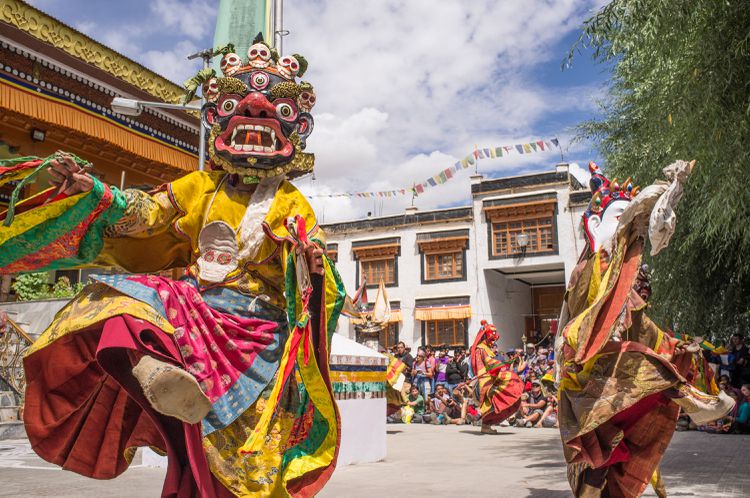Ladakh: A Land of High Passes and Cultural Richness
A Remote Yet Majestic Landscape
Situated in the northernmost reaches of India, Ladakh is often celebrated as “The Land of High Passes.” This region is cradled between the towering Kunlun mountains to the north and the majestic Himalayas to the south, offering some of the most striking and remote landscapes on Earth. Ladakh’s topography is defined by rugged mountain ranges, vast high-altitude deserts, and tranquil valleys, making it a place of unparalleled natural beauty. The capital city, Leh, serves as the primary gateway for visitors and acts as the cultural and commercial heartbeat of the region.
A Cultural Tapestry Woven with Diversity
Despite its isolated location and harsh climatic conditions, Ladakh is a vibrant mosaic of cultures. Predominantly influenced by Tibetan Buddhism, the region also embraces elements of Islam, Hinduism, and ancient animistic beliefs, reflecting a unique cultural synthesis. The people of Ladakh are an ethnically diverse group, including Ladakhis, Tibetans, Dards, and Baltis, each contributing to the region’s rich cultural heritage. This diversity is evident in the region’s monasteries, traditional music, dance forms, and the colorful festivals that highlight Ladakh’s deep-rooted traditions.
Strategic and Cultural Significance
Ladakh’s importance extends beyond its cultural richness. Strategically, it serves as a critical buffer between India and its neighboring countries, China and Pakistan. Culturally, Ladakh stands as one of the last strongholds of Tibetan Buddhism, with its monasteries and religious festivals playing a pivotal role in preserving these ancient practices. The region’s distinctive traditions, coupled with its awe-inspiring landscapes, make Ladakh a sought-after destination for those in search of adventure and spiritual enrichment.
The Role of Festivals in Ladakh’s Cultural and Social Life
Weaving the Social Fabric
In Ladakh, festivals are more than just events; they are the threads that weave the region’s social and cultural fabric. Deeply connected to the religious practices of Tibetan Buddhism, these festivals are often held in monasteries, featuring elaborate rituals, masked dances, and spiritual performances. Celebrations like Hemis, Losar, and the Ladakh Festival play a crucial role in preserving the region’s cultural legacy and fostering a strong sense of community among the Ladakhi people.
Spiritual Reflection and Religious Significance
Many of Ladakh’s festivals carry profound religious significance. They provide a time for spiritual reflection, communal prayer, and a reaffirmation of faith. Monastic festivals, such as those at Hemis and Phyang monasteries, are believed to dispel evil spirits and bring blessings to the community. These gatherings offer monks the opportunity to showcase their spiritual knowledge, while the local populace renews its spiritual commitments through participation in these sacred rituals.
Strengthening Social Bonds
Festivals in Ladakh serve as a powerful force for social cohesion, bringing together people from different villages, ethnic backgrounds, and even attracting tourists. In a region where isolation can be common due to the harsh environment, these festivals offer an essential platform for social interaction, news exchange, and the strengthening of communal ties. The collective participation in these events helps maintain the continuity of Ladakhi traditions, ensuring they are passed down through generations.
Festivals as a Bridge Between Culture and Tourism
A Magnet for Cultural Tourism
Ladakh’s festivals are a major attraction for tourists, offering them an immersive experience of the region’s vibrant cultural and spiritual life. The sight of colorful costumes, intricate masks, and traditional performances is a feast for the senses, drawing photographers, filmmakers, and culture enthusiasts from around the globe. Events like the Ladakh Festival are specifically designed to showcase the region’s culture, featuring parades, folk dances, and exhibitions of local handicrafts.
Economic Impact of Festival Tourism
The influx of tourists during festival seasons provides a significant boost to Ladakh’s local economy, particularly benefiting the hospitality and tourism industries. Local businesses, including hotels, restaurants, travel agencies, and handicraft vendors, experience heightened activity, directly supporting the livelihoods of many Ladakhis. Moreover, these festivals promote cultural tourism, encouraging visitors to explore lesser-known areas of Ladakh, thereby distributing economic benefits more widely across the region.
Balancing Tourism with Sustainability
While festivals attract many visitors, there is an increasing awareness of the need to balance tourism with the preservation of Ladakh’s fragile environment and cultural heritage. Efforts are being made to promote eco-friendly tourism, where visitors are encouraged to respect local customs, reduce waste, and support sustainable practices. Additionally, festivals are becoming platforms for raising environmental awareness, highlighting the importance of safeguarding Ladakh’s unique ecosystem.
Conclusion: Festivals as a Pillar of Ladakhi Identity
Ladakh’s festivals are not just celebrations; they are an essential aspect of the region’s cultural identity and economic vitality. As these festivals continue to attract both locals and tourists, they play a crucial role in preserving Ladakh’s traditions and promoting its cultural heritage. Understanding the importance of these festivals offers a deeper appreciation of Ladakh’s unique character and the ongoing efforts to maintain its identity in the face of modern challenges and increasing tourism.

Historical Roots of Ladakh’s Festivals
Ancient Origins
The festivals of Ladakh have deep roots that stretch back to the earliest inhabitants of the region. Initially, these celebrations were closely tied to the agricultural calendar, marking critical events such as sowing, harvesting, and the conclusion of winter. These ancient festivals were steeped in animistic traditions, where rituals were performed to appease nature spirits and ensure prosperous harvests. Long before Buddhism took hold, these early celebrations laid the foundation for what would later become key cultural events in Ladakh.
The Buddhist Transformation
The arrival of Tibetan Buddhism in Ladakh during the 8th century, largely due to the influence of Guru Padmasambhava, was a transformative moment in the region’s cultural history. Existing local festivals were adapted and infused with Buddhist rituals and symbolism, evolving into the religious and cultural events that are observed today. Monasteries, which began to spring up across Ladakh, became the focal points of these festivals, turning them into occasions for communal worship, spiritual teachings, and the reinforcement of Buddhist values.
Royal Patronage and Festival Flourishing
The royal families of Ladakh played an instrumental role in the development and institutionalization of these festivals. Kings often sponsored festivals as a means of securing divine favor for their reigns, ensuring prosperity and stability in their kingdoms. Royal support not only guaranteed that these festivals were grand and elaborate but also drew participants from across Ladakh and neighboring regions. The Hemis Festival, for example, is one of the most prominent festivals, partly due to the patronage it received from Ladakh’s royalty.
The Influence of Tibetan Buddhism on Ladakh’s Festivals
Rituals and Symbolism
Tibetan Buddhism, which became the dominant religion in Ladakh, brought with it a rich tapestry of rituals and ceremonies that significantly influenced the region’s festivals. Celebrations like Losar (Tibetan New Year), Dosmoche (year-end festival), and various Gustor festivals are deeply rooted in Buddhist cosmology and align with the Tibetan calendar. These festivals typically feature intricate rituals led by monks, including offerings, prayers for peace and prosperity, and the performance of Cham dances, which symbolically depict the triumph of good over evil.
Monastic Centrality
Monasteries such as Hemis, Thiksey, and Phyang are not just religious centers but also serve as the main venues for many of Ladakh’s most significant festivals. Monks play a central role in these celebrations, leading rituals, chanting prayers, and performing sacred dances. The themes of these festivals often reflect core Buddhist teachings, such as the concepts of karma, rebirth, and the impermanence of life, offering spiritual guidance to the community.
Spiritual and Communal Importance
For the people of Ladakh, festivals are more than just social gatherings; they are profound spiritual experiences. These events offer the community an opportunity to engage in collective prayer and meditation, seeking blessings and protection from the deities. Festivals also serve as moments for Ladakhis to reaffirm their faith and spiritual values, drawing inspiration from Buddhist teachings. The presence of high lamas and rinpoches during these festivals further elevates their spiritual significance, as their teachings and blessings are highly revered.
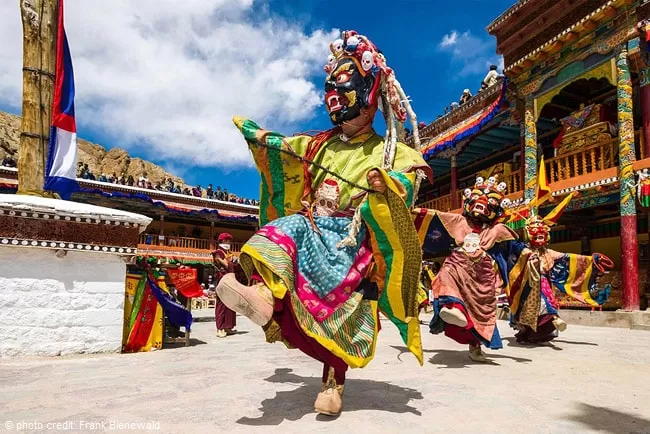
Evolution of Ladakh’s Festivals: From Tradition to Modernity
Adapting to New Realities
Over the centuries, Ladakh’s festivals have evolved in response to various social, political, and economic changes. What once were purely religious and community-centric events have gradually opened up to include tourists, who are now often invited to observe and even participate in the celebrations. Modern influences have also introduced cultural performances, exhibitions, and fairs, making the festivals more inclusive and appealing to a broader audience.
The Impact of Tourism
The rise of tourism in Ladakh has significantly impacted its festivals. While the influx of visitors has brought economic benefits, it has also led to the commercialization of some festivals. The Ladakh Festival, initiated by the government in the 1980s, was specifically created to showcase the region’s culture to tourists, featuring folk traditions, handicrafts, and local cuisine. However, this commercialization has sparked a debate about preserving the authenticity of these festivals while accommodating the needs of tourism.
Technology and Globalization
Technology and social media have also played a role in shaping the modern experience of Ladakh’s festivals. Events that were once known only to locals are now promoted online, attracting a global audience. While this increased visibility has helped in preserving and promoting these festivals, it has also posed challenges in maintaining their traditional essence amidst the influences of globalization.
Cultural Syncretism in Ladakh’s Festivals
A Fusion of Traditions
Ladakh’s festivals are a rich blend of cultural influences, where indigenous traditions have merged with Buddhist rituals, Islamic practices, and even elements of Hinduism. For example, Losar, while primarily a Buddhist celebration, incorporates elements from the pre-Buddhist Bon religion and ancient animistic practices. Similarly, some festivals have absorbed influences from neighboring regions like Kashmir and Tibet, creating a unique cultural mosaic that is distinctly Ladakhi.
Interfaith Unity
Ladakh’s festivals often serve as platforms for interfaith participation, reflecting the region’s history of peaceful coexistence and mutual respect among different religious communities. During festivals like Losar and the Ladakh Festival, it is common to see Muslims, Buddhists, and Hindus celebrating together, demonstrating Ladakh’s inclusive and harmonious spirit. This interfaith interaction not only enriches the festivals but also strengthens social bonds, promoting unity within the diverse Ladakhi community.
Contemporary Influences
In recent years, global culture has increasingly influenced Ladakh’s festivals, with modern music, dance, and popular culture elements making their way into some celebrations. While this infusion of contemporary culture has made the festivals more vibrant and accessible to younger generations, there is a concerted effort within the local community to preserve the traditional aspects and ensure that the core spiritual values remain intact.
The Enduring Legacy of Ladakh’s Festivals
Ladakh’s festivals are deeply rooted in a rich history that intertwines ancient traditions, Tibetan Buddhism, and evolving cultural dynamics. As these celebrations adapt to the modern world, they serve as vital connections to the region’s heritage, offering insights into the spiritual and cultural life that defines Ladakh. Understanding the historical context of these festivals enhances our appreciation of their role in preserving Ladakh’s unique cultural identity, even as it faces the challenges of the contemporary era.
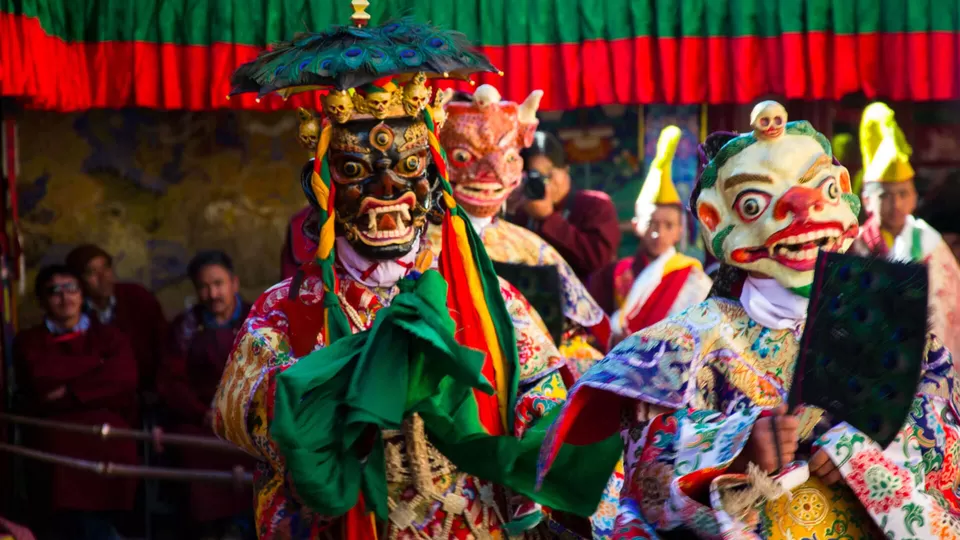
The Hemis Festival: A Historical and Spiritual Pillar
Ancient Foundations
The Hemis Festival stands as one of Ladakh’s most ancient and significant celebrations, with its origins tracing back to the establishment of Hemis Monastery in the 17th century under King Sengge Namgyal. This festival honors Guru Padmasambhava, also known as Guru Rinpoche, who is credited with introducing Buddhism to the Himalayan region. The event marks the birth anniversary of this revered figure, who is regarded as the spiritual guardian of Ladakh and a pivotal figure in establishing Buddhism as the dominant faith in the area.
Cultural and Spiritual Significance
The Hemis Festival is not just a cultural celebration; it symbolizes the triumph of spiritual enlightenment over ignorance and malevolence. For the people of Ladakh, this festival is an opportunity to seek the blessings of Guru Padmasambhava for peace, prosperity, and spiritual growth. It plays a crucial role in maintaining Ladakh’s cultural heritage, showcasing traditional music, dance, and rituals that have been preserved through generations.
Core Events: Sacred Rituals and Cultural Expressions
Cham Dances
The heart of the Hemis Festival is the Cham dance, a series of sacred performances by monks adorned in elaborate costumes and masks. These dances are rich in symbolism, portraying various elements of Buddhist mythology, including the defeat of evil forces and the protection of all beings by divine entities. The masks represent a range of deities, demons, and animals, while traditional music, played on cymbals, drums, and horns, accompanies the dances.
Thangka Unveiling
Every twelve years, the Hemis Monastery reveals a massive thangka, a religious painting of Guru Padmasambhava, believed to bestow blessings on all who gaze upon it. This rare unveiling is a major event, drawing thousands of devotees and tourists from around the globe.
Ritual Offerings and Prayers
Throughout the festival, monks perform various rituals, including offering prayers, lighting butter lamps, and making offerings to the deities. These acts are intended to purify the environment, remove obstacles, and bring peace and harmony to the community.

Visitor Experience: Engaging with Ladakh’s Cultural Heritage
Participating in the Festival
Tourists are welcomed to join the Hemis Festival, where they can witness vibrant cultural performances and immerse themselves in the local traditions. It’s advisable to arrive early to secure a good viewing spot in the monastery’s courtyard, which can become crowded. Photography is generally allowed, but visitors should be respectful, dress modestly, and adhere to local customs.
Cultural Exploration
Beyond the festival’s main events, visitors can explore the Hemis Monastery, one of Ladakh’s largest and wealthiest, renowned for its stunning murals, statues, and artifacts. This experience provides a deeper understanding of Ladakh’s cultural and religious landscape. Tourists can also engage with the local community, taste traditional Ladakhi cuisine, and purchase local handicrafts as souvenirs.
Practical Tips for Visitors
Given the festival’s popularity, accommodations in Leh and surrounding areas are in high demand, so booking early is recommended. A range of options is available, from luxury hotels to budget guesthouses and homestays. The Hemis Monastery is located about 45 kilometers from Leh, and visitors can reach it by hiring taxis or joining organized tours.
The Festival’s Impact on the Local Community
Economic Boost
The influx of tourists during the Hemis Festival provides a significant boost to the local economy, benefiting the hospitality, transportation, and handicraft sectors. Local artisans and vendors have a unique opportunity to showcase their products to a global audience, promoting Ladakh’s traditional arts and crafts.
Social Unity
The festival also fosters a strong sense of community among Ladakhis, as people from various villages and backgrounds gather to celebrate their shared cultural heritage. It serves as a platform for cultural exchange, allowing Ladakhis to interact with visitors from around the world, fostering mutual understanding and broadening perspectives.
Preservation of Tradition
By celebrating the Hemis Festival with dedication, the local community ensures that their cultural and religious traditions are preserved for future generations. The festival also raises awareness about the importance of safeguarding Ladakh’s cultural heritage in the face of modernization and globalization.
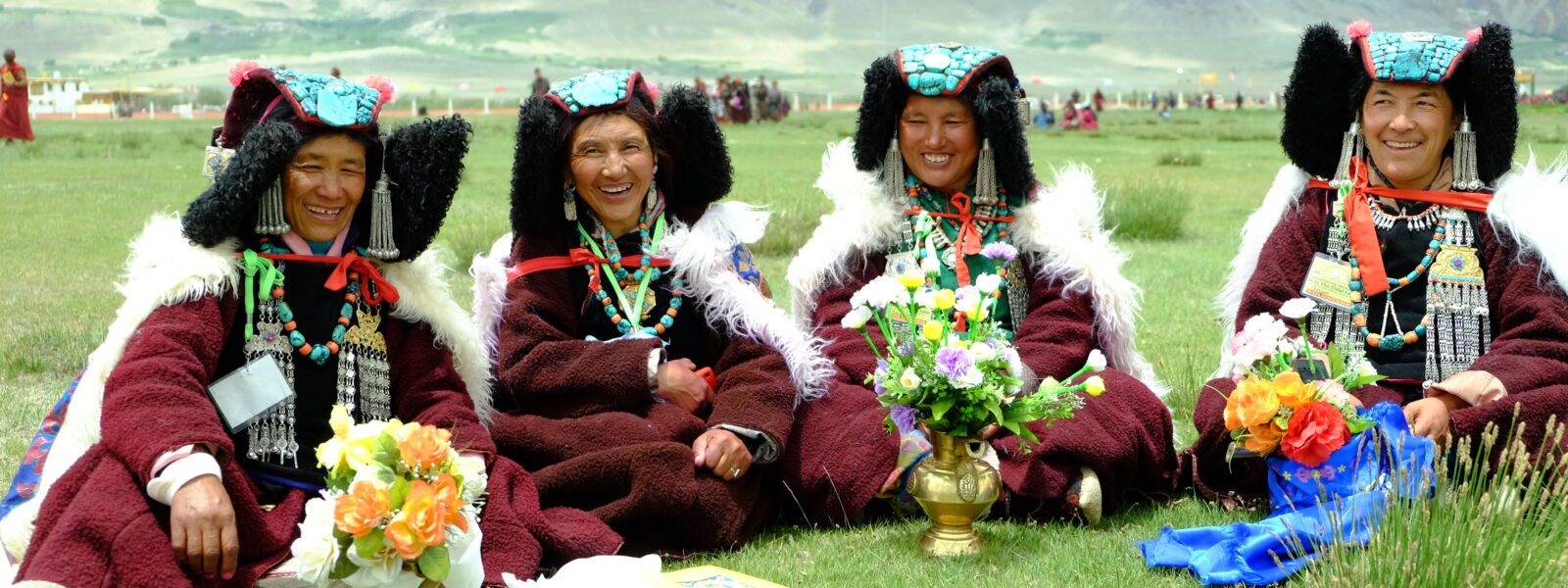
The Rich History and Evolution of Losar
Ancient Beginnings: The Origins of Losar
Losar, the Tibetan New Year, stands as one of the most significant celebrations in Ladakh, with its origins deeply intertwined with the pre-Buddhist Bon religion. Initially celebrated during the winter solstice, Losar marked the end of winter’s harshness and heralded the start of a new agricultural cycle. As Buddhism spread throughout the region, the festival evolved, aligning with the Tibetan calendar to symbolize the renewal of life and the hope for prosperity in the coming year.
Buddhist Influence: Integration into Spiritual Practices
With the integration of Buddhism, Losar transformed into both a religious and cultural event. It now represents the beginning of a new lunar cycle, incorporating Buddhist rituals and prayers into its celebrations. The festival also commemorates Buddhism’s triumph over the ancient Bon religion, adding layers of spiritual significance to the festivities.
Rituals and Traditions of Losar
Preparation and Festive Atmosphere
The weeks leading up to Losar are filled with meticulous preparations. Homes are cleaned and adorned with decorations, while families prepare traditional dishes like guthuk, a noodle soup, and khapse, a fried pastry. Special altars are set up, featuring offerings of fruits, sweets, butter lamps, and incense, creating an atmosphere of reverence and festivity.
Ceremonial Practices: Rituals and Symbolism
Losar’s ceremonial practices begin with the offering of ‘Changkol,’ a ritual drink made from barley flour and butter, dedicated to the deities. A significant ritual involves burning an effigy known as ‘Lu,’ symbolizing the expulsion of negative energy and bad luck from the previous year. On ‘Lama Losar,’ the first day of the festival, people visit monasteries to offer prayers and receive blessings, with monastic rituals, including sacred Cham dances, playing a central role.
Family and Community Celebrations
Losar is a time for families to gather, exchange gifts, and share festive meals. Visiting relatives and friends to extend New Year’s wishes is customary. The festival also features communal activities like horse racing, archery, and traditional dance performances, enhancing the sense of community and celebration.

Losar Across Ladakh: Regional Celebrations
Variations in Celebration
Losar is celebrated across Ladakh, but each region brings its unique flavor to the festivities. In some villages, traditional folk dances and special ceremonies reflect local customs, while in Leh, the capital, the festival is marked by grand parades, cultural performances, and public gatherings.
Monastic Observances
Monasteries such as Thiksey, Spituk, and Stok hold elaborate Losar celebrations. Monks engage in intricate rituals, from creating sand mandalas to offering prayers for world peace and performing sacred dances. These monastic events, often open to the public, offer visitors a deep insight into the spiritual aspects of Losar.
Urban vs. Rural Celebrations
In urban centers like Leh, Losar takes on a more public character, with large gatherings and organized events. Rural celebrations, on the other hand, are more intimate, focusing on family and community bonds. Despite these differences, the essence of Losar—a time for renewal and reflection—remains consistent throughout Ladakh.
Spiritual Significance of Losar in Tibetan Buddhism
Renewal and Purification
Losar is a time of spiritual renewal, where the challenges of the past year are left behind, and the new year is welcomed with hope and positivity. The festival’s rituals, such as burning incense and offering prayers, are believed to purify the environment and remove obstacles to spiritual growth.
Emphasizing Core Buddhist Values
The festival underscores the importance of compassion and wisdom, key tenets of Tibetan Buddhism. Losar encourages acts of generosity, such as giving alms to monks and helping those in need, reinforcing the Buddhist principles of selflessness and kindness.
Connection to Nature’s Cycles
Losar also symbolizes the alignment of human life with the cycles of nature, particularly the lunar calendar. This connection emphasizes the importance of living in harmony with the natural world, a core aspect of Buddhist philosophy.
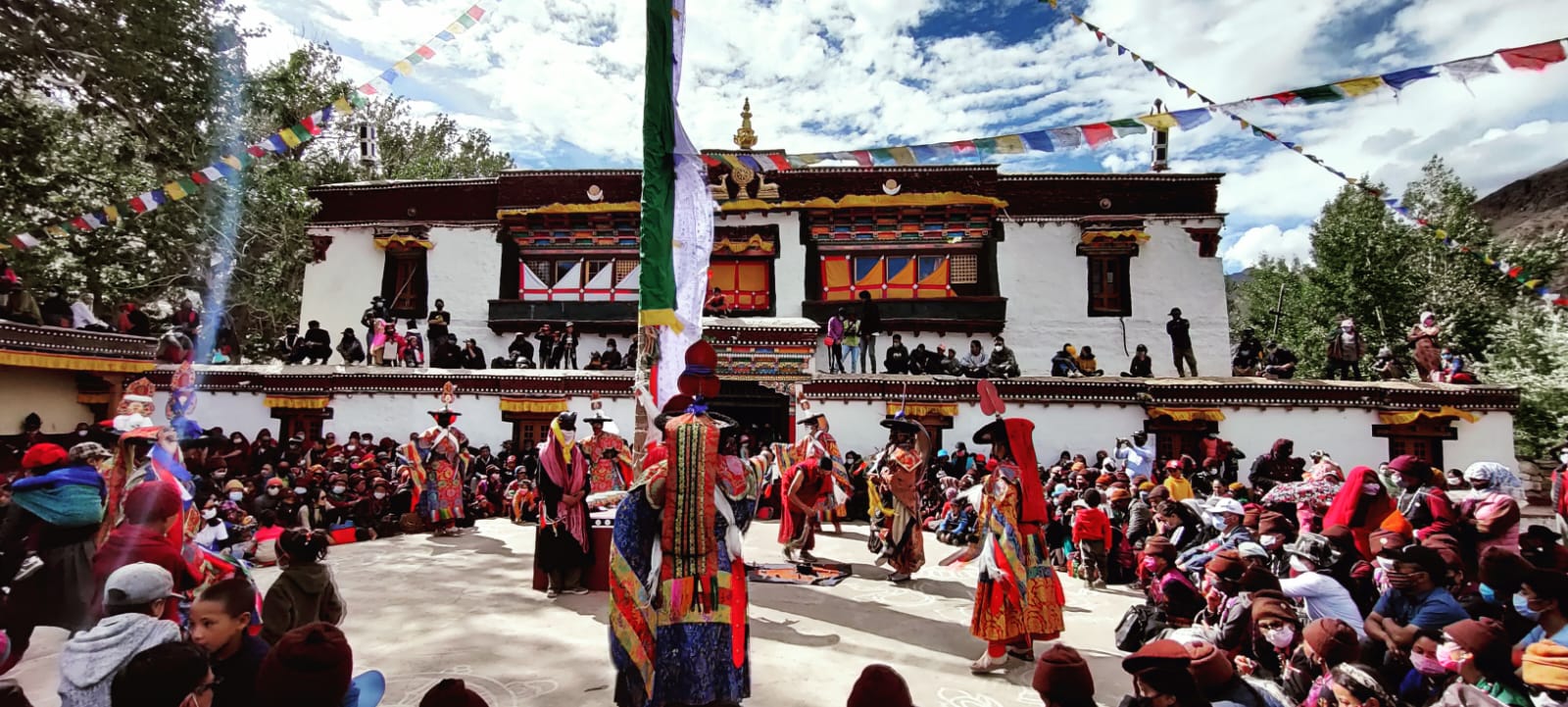
Dosmoche Festival: A Glimpse into Ladakh’s Unique Celebrations
Historical Significance: From Royal Origins to Modern Practices
Dosmoche, celebrated in Leh, Likir, and Diskit monasteries, was originally established by Ladakh’s royal family as a ritual to expel evil spirits at the start of the New Year. This festival, one of the final events in the New Year celebrations, blends elements of Buddhism with ancient shamanistic practices.
Key Rituals: Sacred Dances and Ritual Offerings
The Dosmoche festival is marked by the Cham dance, performed by Lamas in vibrant masks representing various deities and spirits. Central to the rituals is the creation and ceremonial destruction of storma, sacrificial cakes offered to deities and then burned to eliminate lingering malevolent forces.
Tourist Participation: Engaging with Ladakh’s Cultural Heritage
Tourists are encouraged to observe and photograph the dances and rituals of Dosmoche, immersing themselves in the intense atmosphere of this traditional festival. Participation in local customs, such as offering prayer flags and sharing communal meals, is welcomed, offering a meaningful cultural exchange.
Sindhu Darshan Festival: Honoring the Lifeline of Ladakh
Celebrating the Indus River’s Legacy
The Sindhu Darshan Festival is a tribute to the Indus River, which has been a crucial part of Ladakh’s cultural and historical heritage. Revered as a life-giving force, the river is central to the identity and traditions of the Ladakhi people. This festival is a celebration of the river’s enduring significance in sustaining the region’s way of life.
Key Highlights: Processions and Performances
The festival kicks off with a sacred procession where the waters of the Indus are carried to various ceremonial sites. This event is followed by a series of cultural performances that highlight the rich tapestry of Ladakhi arts, including traditional dances and music. Rituals dedicated to the river, along with performances from various Indian states, create a vibrant and diverse celebration that embodies the spirit of unity and cultural exchange.
Visitor Engagement: Immersing in Ladakhi Culture
For tourists, the Sindhu Darshan Festival offers an immersive cultural experience. Visitors are encouraged to participate in the rituals, including communal offerings to the river, and to enjoy the live performances. The festival’s open and welcoming atmosphere provides an excellent opportunity to connect with locals and gain a deeper understanding of Ladakhi culture and hospitality.
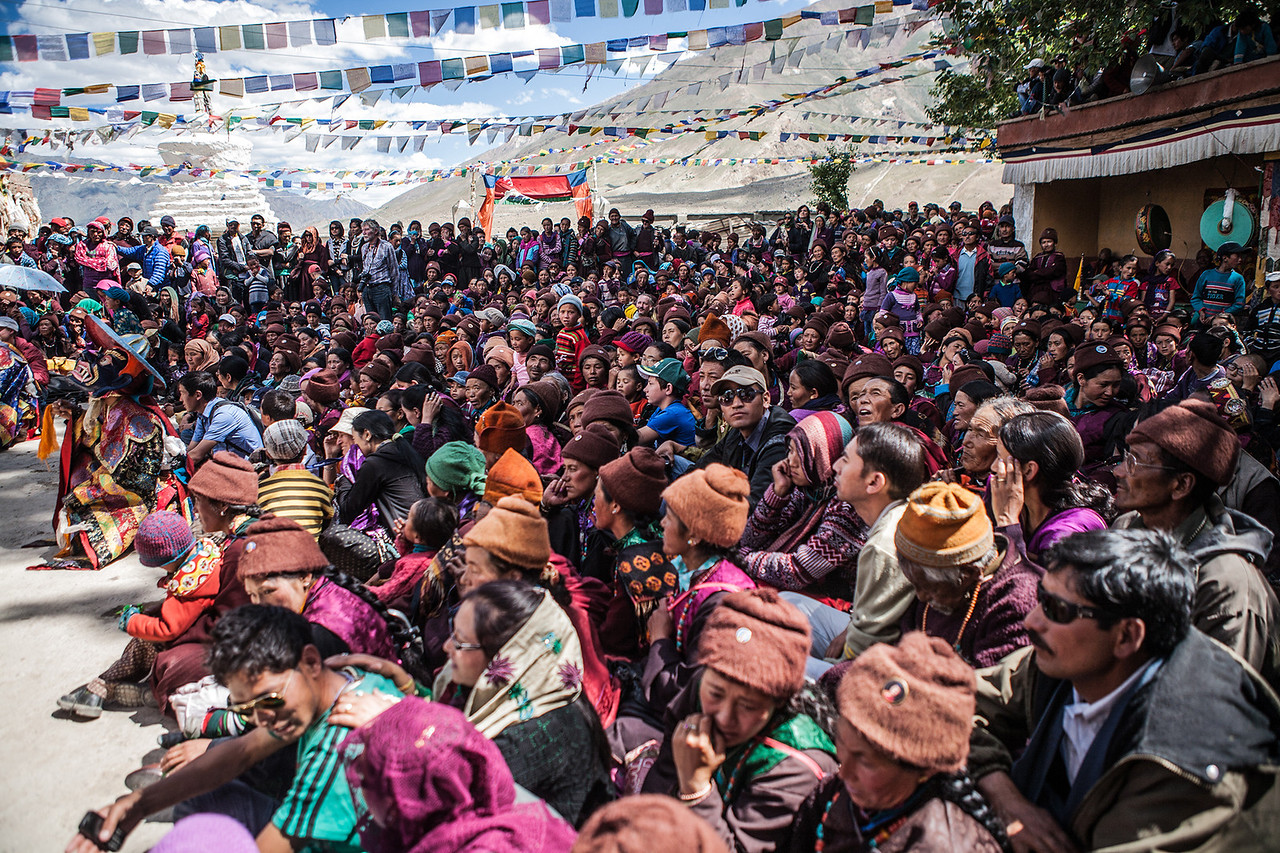
Korzok Gustor: Spiritual Celebration at Tso Moriri
Monastic Rituals and Festivities
Held at the Korzok Monastery on the serene banks of Tso Moriri Lake, the Korzok Gustor is a deeply spiritual festival that marks the victory of good over evil. The tranquil setting of the monastery adds to the religious significance of the event, making it a unique blend of spirituality and cultural celebration.
Symbolic Ceremonies: Dance and Rituals
Central to the Korzok Gustor are the ‘Black Hat Dance’ and other Cham performances, which are rich in religious symbolism. These sacred dances are performed to drive away evil spirits and ensure the community’s spiritual well-being. The festival reaches its peak with the ritual destruction of a sacrificial cake, a dramatic reenactment symbolizing the triumph of Buddhism over adversity.
Local Impact: Cultural and Economic Significance
The festival plays a vital role in the spiritual life of the local community, serving as a time for purification and renewal. Economically, Korzok Gustor draws visitors to this remote area, boosting local businesses and supporting traditional crafts. It is a time of both spiritual reflection and economic activity, benefiting the community in multiple ways.
Yuru Kabgyat: A Celebration of Faith and Tradition
Spiritual Connections at Lamayuru Monastery
Yuru Kabgyat is a significant festival celebrated at Lamayuru Monastery, known as the ‘Moonland’ of Ladakh due to its unique lunar-like landscape. This festival is an important religious event that honors the teachings of Buddha and the local deities worshipped in the region, serving as a time for spiritual renewal and divine blessings.
Rituals and Sacred Dances
The festival features sacred Cham dances, which are performed by monks wearing elaborate masks. These dances are not only a display of cultural heritage but also serve educational and religious purposes, depicting various Buddhist philosophies and mythological tales. Rituals performed during the festival aim to cleanse the community of negative influences and bring about prosperity and peace.
Experiencing Yuru Kabgyat: A Glimpse into Ladakh’s Soul
For those attending Yuru Kabgyat, the festival offers an authentic glimpse into the spiritual and cultural life of Ladakh. Unlike more commercialized festivals, Yuru Kabgyat retains its traditional charm, providing visitors with an intimate experience of Buddhist rituals and the warm hospitality of the local people. The breathtaking setting of Lamayuru adds to the allure, making it a must-visit for those seeking a deeper connection with Ladakh’s cultural heritage.
These festivals collectively highlight the rich cultural fabric of Ladakh, offering a unique insight into the region’s traditions, spiritual practices, and communal life.
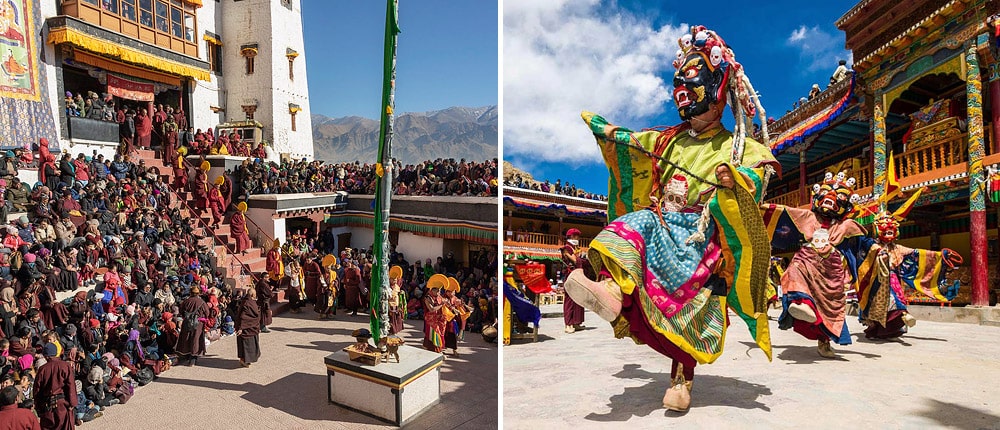
Phyang Tsedup: A Celebration of Heritage at Phyang Monastery
A Sacred Gathering at One of Ladakh’s Oldest Monasteries
Phyang Tsedup is celebrated at the historic Phyang Monastery, located just 15 kilometers from Leh. This ancient religious institution is one of the most significant in Ladakh and is dedicated to the founder of the Drikung Kagyu lineage of Tibetan Buddhism. The festival is a time-honored tradition, where monks engage in rituals passed down through generations, offering prayers and blessings to the community.
Cultural Splendor: Cham Dance and Traditional Music
The heart of Phyang Tsedup lies in its cultural performances, particularly the Cham dance. Monks, adorned in vivid costumes and ornate masks, perform these sacred dances to bring protection and blessings to the local people. The festival also features traditional music, chanting, and the display of religious relics, creating a rich cultural tapestry that attracts both locals and visitors. The ancient murals and statues within the monastery further enhance the spiritual atmosphere, providing a profound connection to Ladakh’s heritage.
Stok Guru Tsechu: A Royal Tradition at Stok Monastery
A Festival with Royal Ties
Stok Guru Tsechu takes place within the Stok Monastery, part of the Stok Palace complex, which serves as the royal residence of Ladakh’s kings. This festival is deeply intertwined with the royal family, who have historically been involved in its organization. The monastery, belonging to the Gelugpa order of Tibetan Buddhism, hosts one of the few festivals where laypeople are directly involved in religious rituals, reflecting the close relationship between the monastery and the local community.
Oracles and Masked Dances: A Unique Spiritual Experience
A distinctive aspect of Stok Guru Tsechu is the participation of two oracles, chosen from among the laypeople, who undergo training by the monks. During the festival, these oracles enter a trance state and deliver prophecies eagerly awaited by the local community. The festival also features Cham dances, with monks wearing elaborate masks that represent various deities, spirits, and animals. These performances are believed to invoke divine protection and ensure the well-being of the village.
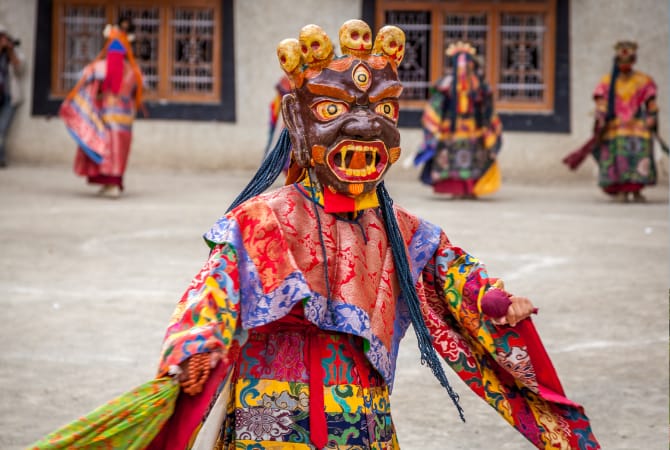
Takthok Tsechu: Commemorating Guru Padmasambhava
A Unique Nyingma Tradition in Ladakh
Takthok Tsechu is celebrated at the Takthok Monastery, the only Nyingma monastery in Ladakh. The festival coincides with the anniversary of Guru Padmasambhava, a revered figure in Tibetan Buddhism known as the second Buddha. The rituals of Takthok Tsechu are distinctive, including the reading of sacred texts, prayers for world peace, and the performance of Cham dances that are central to the festival’s spiritual significance.
Mandalas and Cham Dances: Spiritual Practices in Focus
One of the key rituals during Takthok Tsechu is the creation of a sand mandala, a delicate and intricate representation of the universe crafted from colored sand. This mandala is ritually dismantled at the festival’s conclusion, symbolizing the impermanence of life. The Cham dances performed during the festival are particularly poignant, depicting scenes from the life of Guru Padmasambhava and imparting essential teachings of Tibetan Buddhism.
Matho Nagrang: The Mystical Oracle Festival
Oracle Practices: A Glimpse into Ladakh’s Mysticism
Matho Nagrang, celebrated at Matho Monastery, is one of Ladakh’s most enigmatic festivals, known for its oracle practices. The monastery is the only one in Ladakh that follows the Sakya school of Tibetan Buddhism. During the festival, two monks, after extensive meditation and spiritual preparation, become oracles. In a trance state, they deliver prophecies and offer guidance on matters of health, agriculture, and spirituality, deeply influencing the local community.
Cham Dances and Oracle Feats: A Spiritual Spectacle
The festival is also marked by Cham dances, where monks, wearing fierce masks and vibrant costumes, perform to ward off evil spirits and bring good fortune. The oracles, while in a trance, perform extraordinary feats such as walking blindfolded on the high walls of the monastery, which are seen as manifestations of their divine possession and spiritual power.
Community Impact: A Time of Renewal and Reflection
Matho Nagrang is a period of communal gathering and spiritual renewal. The prophecies given by the oracles are held in high regard, and the entire village participates in the rituals with deep reverence. The festival also draws tourists fascinated by the mystical elements of Ladakh’s spiritual traditions, offering them a rare insight into the region’s unique religious practices.
Conclusion: The Lesser-Known Festivals of Ladakh
While they may not be as famous as major events like Hemis or Losar, these minor festivals offer profound insights into Ladakh’s spiritual and cultural life. Each festival, with its distinct rituals and traditions, contributes to the rich cultural fabric of Ladakh, demonstrating the region’s deep connection to its Buddhist heritage and its commitment to preserving ancient practices in the face of modernity.

The Cultural Significance of Ladakh’s Festivals
Sustaining Ladakh’s Cultural Legacy
A Living Tradition
Festivals in Ladakh serve as vibrant conduits of the region’s ancient traditions, keeping the cultural fabric alive and thriving. These celebrations are not just annual rituals; they are a vital means of transferring customs, beliefs, and practices from one generation to the next. The preservation of Ladakh’s unique identity is visible in the reenactment of historical events, traditional music, dance, and the use of ancient languages in religious practices.
Revitalizing Traditional Arts
These festivals offer a platform to showcase and preserve traditional Ladakhi arts and crafts, which might otherwise fade in the face of modernization. During these events, handicrafts, traditional attire, and locally crafted instruments are prominently featured, ensuring that these artisanal skills continue to flourish. Additionally, the exhibition of thangkas, ancient manuscripts, and other religious artifacts during festivals plays a crucial role in safeguarding these cultural treasures.
Festivals as Pillars of Community Unity
Fostering Collective Identity
Ladakhi festivals are more than just celebrations; they are community-building events that unite people from various villages and backgrounds. The communal preparation, participation in rituals, and shared festivities strengthen social bonds and foster a sense of collective identity. This communal spirit is particularly important in the harsh environment of Ladakh, where cooperation and mutual support are essential for survival.
Bridging Generations
Festivals provide an invaluable opportunity for the older generation to pass on their knowledge and traditions to younger members of the community. Through active participation in these events, children and young adults learn about their heritage, cultivating a sense of pride and responsibility in preserving it. The involvement of all age groups ensures that cultural continuity is maintained, keeping the community cohesive across generations.
Promoting Social Harmony
Ladakh’s festivals also serve as a platform for social integration, often involving participants from different religious and ethnic backgrounds. For example, festivals like Losar see the participation of both Buddhists and Muslims, reflecting the region’s inclusive and harmonious ethos. These celebrations also offer tourists and new residents a chance to engage with the local culture, fostering understanding and respect among diverse groups.
Economic Contributions of Festivals
Boosting Tourism
Festivals are significant drivers of tourism in Ladakh, drawing visitors from around the world who are eager to experience its unique cultural celebrations. The influx of tourists during festival seasons leads to increased demand for local services such as accommodation, food, and transportation, significantly boosting the region’s economy. Popular festivals like Hemis and the Ladakh Festival contribute to a surge in revenue for local businesses, particularly in the hospitality sector.
Supporting Local Artisans
For local artisans and craftsmen, festivals provide a crucial marketplace for selling their products. The demand for traditional Ladakhi goods, such as handicrafts, textiles, jewelry, and religious artifacts, peaks during these times, offering artisans a vital source of income. This not only supports the local economy but also helps in preserving the region’s cultural heritage by keeping traditional skills alive.
Sustainable Economic Growth
The tourism boom during festivals often leads to the development of infrastructure and services that benefit the entire community. Improvements in roads, communication networks, and public facilities, driven by the need to accommodate visitors, have long-term benefits for local residents. However, there is an ongoing effort to balance economic growth with environmental sustainability, ensuring that tourism does not harm Ladakh’s fragile ecosystem.
Navigating Modernization and Cultural Preservation
Balancing Tradition and Modernity
As Ladakh becomes increasingly connected to the outside world, its festivals are evolving, reflecting the influence of commercialization and globalization. What were once intimate, community-focused events are now large-scale attractions designed to appeal to tourists as well. While this shift brings economic benefits, it also raises concerns about the dilution of traditional practices and the potential loss of spiritual significance.
Adapting to New Influences
Globalization has introduced new cultural elements to Ladakh, some of which are being incorporated into local festivals. This includes the integration of modern music, dance, and even international cuisine into traditional celebrations. While these changes make the festivals more accessible and appealing to younger generations and international visitors, they also pose the challenge of maintaining the balance between preserving tradition and embracing modernity.
The Role of Media and Technology
The rise of social media and digital technology has transformed how Ladakh’s festivals are experienced and shared. These events are now widely promoted online, attracting a global audience and increasing their visibility. However, this increased exposure has also led to concerns about the commodification of cultural practices and the potential loss of authenticity, as festivals increasingly cater to the expectations of a global audience rather than maintaining their sacred origins.
Conclusion: The Future of Ladakh’s Festivals
Ladakh’s festivals are a cornerstone of the region’s cultural heritage, fostering community unity and contributing to the local economy. However, as the region faces the pressures of modernization and globalization, the challenge lies in preserving the authenticity and spiritual essence of these celebrations while adapting to contemporary influences. By navigating this delicate balance, Ladakh can ensure that its festivals continue to thrive, serving as a bridge between its rich cultural past and its evolving future.

Discovering Ladakh During Festival Season: A Comprehensive Guide
When to Go: Seasonal Insights for Festival Enthusiasts
Summer Season (June to September): Embrace Ladakh’s Festive Spirit
The summer months in Ladakh, stretching from June to September, present an ideal time for festival-goers. During this period, the weather is at its best, with temperatures ranging from 15°C to 30°C (59°F to 86°F). The clear skies and open roads allow for seamless travel to even the most remote regions. This is the peak season, not only for tourism but also for some of Ladakh’s most significant festivals. The Hemis Festival, held in June or July, is a vibrant spectacle that draws visitors from around the world. Similarly, the Ladakh Festival in September and Phyang Tsedup in July offer unique cultural experiences. However, with the influx of tourists, accommodations and travel services can be more expensive and crowded, making early bookings essential.
Winter Season (November to March): The Serenity of Ladakh’s Winter Festivities
For those seeking adventure and tranquility, visiting Ladakh in winter offers a stark contrast to the bustling summer season. Temperatures can plummet to -20°C (-4°F) or even lower, but the snow-covered landscapes are breathtaking. Winter festivals, such as Losar (the Tibetan New Year) in December or January, provide an intimate glimpse into Ladakhi culture. Other notable winter celebrations include Matho Nagrang in March and Dosmoche in February. These events offer a chance to experience Ladakh’s traditions in a quieter, more serene setting. However, traveling in winter requires careful planning, as snow can close roads, and flights may face delays. Visitors must be well-prepared for the extreme cold with proper gear.
Spring Season (April to May): Rebirth of Ladakh’s Landscape and Culture
As winter fades, Ladakh awakens in the spring, offering moderate temperatures and blossoming landscapes. This season is perfect for those who prefer fewer crowds while still enjoying the region’s beauty. Smaller, less crowded festivals such as Stok Guru Tsechu and Yuru Kabgyat take place during this time, providing a more personal cultural experience. Spring is also an excellent season for trekking, though travelers should be flexible with their itineraries as some high-altitude passes may still be closed.
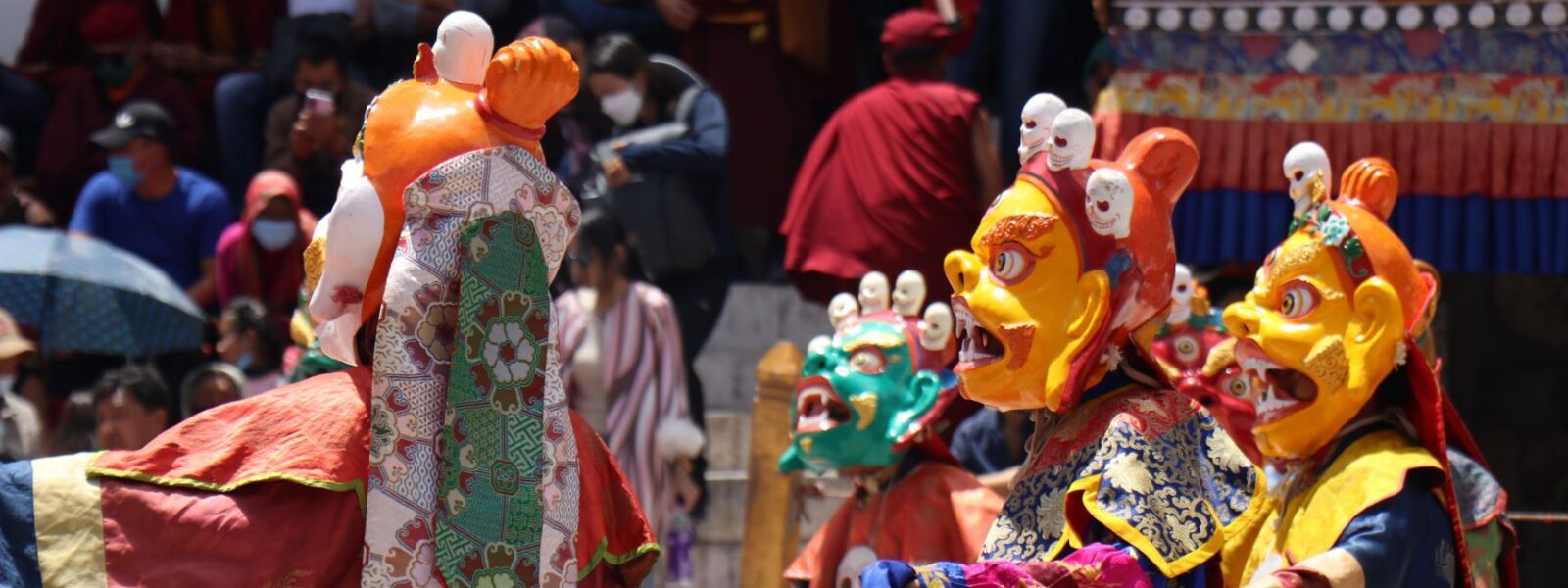
Festival-Focused Travel Itineraries: Maximizing Your Experience
7-Day Hemis Festival Itinerary: A Journey Through Ladakh’s Cultural Heart
Begin your Ladakh adventure in Leh, where the first two days should be dedicated to acclimatization. Use this time to explore local landmarks such as Leh Palace, Shanti Stupa, and Thiksey Monastery.
On Day 3, immerse yourself in the Hemis Festival at Hemis Monastery, where you can witness traditional Cham dances and rituals. The following day, visit Phyang Monastery and Basgo Monastery, both rich in history and offering stunning vistas.
Day 5 takes you to the Nubra Valley via Khardung La, the world’s highest motorable pass, where you can explore sand dunes, monasteries, and spot Bactrian camels.
Day 6 is reserved for the mesmerizing Pangong Tso Lake, known for its changing colors, before returning to Leh.
Conclude your trip on Day 7 with some last-minute shopping in Leh before departure.
10-Day Winter Festival Itinerary: Embracing Ladakh’s Cold Season Traditions
Upon arrival in Leh, spend the first three days acclimating to the high altitude while visiting nearby monasteries and preparing for the cold.
Days 4 and 5 are dedicated to Losar celebrations, where you can participate in New Year rituals and engage with the local community.
Depending on your preference, spend Days 6 and 7 exploring either the remote Nubra Valley or the peaceful Tso Moriri Lake, both offering unique winter experiences.
On Day 8, witness the mystical oracle practices at Matho Monastery during the Matho Nagrang festival.
The following day, visit Thiksey Monastery and Shey Palace, two of Ladakh’s most beautiful and historic sites, before departing on Day 10.
Accommodation Guide: Where to Stay During Your Festival Visit
Staying in Leh: From Luxury to Authentic Homestays
Leh, the gateway to Ladakh, offers a range of accommodations to suit every traveler. Luxury seekers can opt for hotels like The Grand Dragon Ladakh, which provides modern comforts such as heating, Wi-Fi, and fine dining. For a more authentic experience, consider staying in a Ladakhi homestay like Ladakh Himalayan Homestay, where you can immerse yourself in local culture. For a spiritual retreat, some monasteries, including Hemis and Thiksey, offer basic accommodations that allow for a peaceful stay with minimal amenities.
Nubra Valley: Boutique Hotels and Cultural Immersion
In Nubra Valley, travelers can choose between boutique hotels and luxury camps, such as the Desert Himalaya Resort, which offers stunning views of the surrounding landscapes. Alternatively, staying with a local family in a homestay like Hunder Homestay provides an opportunity to experience traditional Ladakhi hospitality and culture firsthand.
Pangong Tso and Tso Moriri: Tented Camps and Eco-Resorts
For those venturing to Pangong Tso or Tso Moriri, tented camps like Pangong Retreat offer a comfortable stay with basic amenities and unparalleled views of the lakes. Eco-resorts around these areas provide sustainable lodging options, emphasizing environmental conservation and cultural preservation.
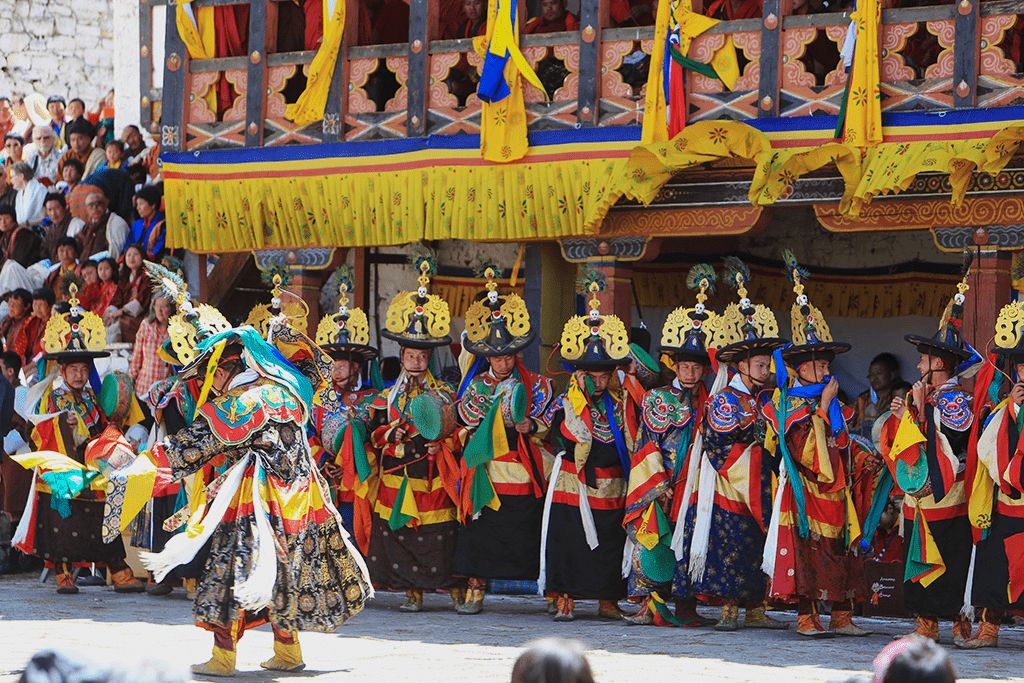
Cultural Etiquette: How to Respectfully Participate in Ladakhi Festivals
Respecting Ladakh’s Religious Practices
When attending festivals in Ladakh, it’s crucial to observe local customs and religious practices. Always remove your shoes before entering a monastery or temple and dress modestly, ensuring that your shoulders and knees are covered. Be mindful of your actions—avoid touching religious objects, statues, or monks without permission, and never point your feet towards altars or religious icons, as this is considered disrespectful.
Engaging with the Local Community
Learning a few basic phrases in Ladakhi or Tibetan can go a long way in building rapport with locals. Always ask for permission before taking photographs, particularly of monks or during religious ceremonies. Maintain a respectful distance and avoid loud conversations or disruptive behavior during prayers and rituals. It’s also important not to give money directly to children, as this can encourage begging.
General Behavior and Environmental Responsibility
Participating in local customs, such as offering butter lamps or joining communal meals if invited, can enhance your cultural experience. Show respect for Ladakh’s environment by avoiding littering and adhering to Leave No Trace principles. Refrain from consuming alcohol or smoking near religious sites, and avoid bringing non-vegetarian food to festivals or religious gatherings, as many locals follow vegetarian diets.
Photography Etiquette: Capturing Ladakh’s Festivals with Respect
Taking Respectful and Non-Intrusive Photos
To capture the essence of Ladakh’s festivals without intruding on personal space, use a zoom lens for close-up shots. Early morning and late afternoon offer the best lighting conditions in this high-altitude region. However, avoid using flash photography during rituals, as it can be disruptive. Always respect restricted areas and only photograph sacred rituals with explicit permission.
Engaging with Your Subjects
When photographing locals, always ask for their consent first. Engaging with them and showing them the photos afterward can create a positive interaction. If someone declines to be photographed, respect their wishes and move on.
Sharing Your Images Responsibly
If possible, share your photos with the community, either by giving prints to the people you photographed or by sharing them online in a respectful manner. It’s important to acknowledge the cultural significance of the images you capture and avoid commercializing or exploiting them without proper credit and permissions.
Conclusion: Making the Most of Your Festival Visit to Ladakh
Visiting Ladakh during the festival season offers a rare opportunity to dive deep into the region’s rich cultural and spiritual traditions. By choosing the right season, planning your itinerary carefully, and respecting local customs and etiquette, you can ensure that your trip is not only enjoyable but also respectful and meaningful. Whether you’re drawn to the grand celebrations of the Hemis Festival or the quiet beauty of winter festivities, Ladakh promises a vibrant cultural experience that will leave a lasting impression.

Safeguarding Ladakh’s Cultural Legacy
The Threat of Commercialization: Preserving Festival Authenticity
Impact of Tourism on Tradition As tourism booms in Ladakh, the region’s traditional festivals are undergoing significant changes. Festivals that once held deep spiritual significance are increasingly being adapted to suit the tastes and schedules of tourists. Rituals are often rescheduled or shortened to accommodate visitor convenience, diluting the original purpose and spiritual essence of these events. Moreover, additional performances are sometimes introduced purely for entertainment, overshadowing the true meaning of the festivals.
The Commercialization Dilemma The growing emphasis on the economic benefits of tourism has, at times, led to the commercialization of Ladakh’s festivals. Vendors, hotels, and tour operators often prioritize profit over cultural preservation, transforming what were once sacred events into spectacles primarily aimed at tourists. This shift can strip the festivals of their deeper cultural significance, turning them into mere attractions rather than meaningful communal rituals.
Cultural Shifts and Environmental Concerns
Modern Influences on Tradition The influx of global tourists brings with it modern values that can clash with Ladakh’s traditional customs. The younger generation, exposed to these new ideas, may begin to see their ancestral festivals as outdated, leading to a gradual decline in the practice of these cultural traditions. The risk here is not just a loss of tradition, but a fading of the unique identity that these festivals help to preserve.
Environmental Impacts The environmental strain caused by increased tourism during festival times is another pressing issue. The region’s fragile ecosystem is often burdened by the surge in waste, pollution, and the depletion of local resources. The sacred natural sites, integral to many traditional rituals, are at risk of being damaged or polluted, making it difficult for the local community to maintain their customs as they have for generations.
Preservation Initiatives: Government and Grassroots Efforts
Government Actions In response to these challenges, the Indian government, along with the Ladakh Autonomous Hill Development Council (LAHDC), has implemented various cultural heritage programs. These initiatives include the funding of monastery maintenance, support for traditional arts and crafts, and the organization of cultural events that uphold Ladakh’s traditions. Additionally, policies promoting sustainable tourism are being developed to regulate visitor numbers during peak seasons, encourage eco-friendly practices, and ensure that the cultural integrity of the festivals is respected.
NGO and Community-Led Efforts Non-governmental organizations (NGOs) and local communities are also playing a vital role in preserving Ladakh’s cultural heritage. Organizations like the Ladakh Arts and Media Organisation (LAMO) focus on documenting and promoting traditional arts, music, and festivals, while monasteries are setting up cultural centers and training programs to pass down traditional knowledge to younger generations. Community-driven festivals offer a grassroots approach to preserving local customs, providing an alternative to the more commercialized events.
The Future of Ladakh’s Festivals: A Path Forward
Balancing Tradition with Modernity Looking ahead, the challenge will be to find a balance between preserving traditional practices and embracing the inevitability of modern influences. Integrating elements that resonate with younger generations while maintaining the core values of these festivals could be key to their survival. Innovative preservation methods, such as digital archiving and virtual reality, might also play a role in making Ladakh’s traditions accessible to a wider audience.
Promoting Sustainable Tourism The push towards sustainable tourism is expected to intensify, with a focus on minimizing the environmental impact of festivals. This could involve setting limits on tourist numbers, promoting eco-friendly accommodations, and educating visitors about the cultural significance of Ladakh’s festivals. By encouraging responsible tourism, the local community can ensure that their cultural heritage is preserved for future generations.
Empowering Local Communities Empowering local communities to take the lead in preserving their festivals will be crucial. By revitalizing lesser-known village festivals and ensuring that traditions are passed down, locals can maintain the authenticity of their cultural practices. This grassroots revival can also provide a counterbalance to the commercialized events, offering a more genuine experience for both residents and visitors.
Global Recognition and Cultural Exchange
Increasing Global Interest As global interest in Ladakh’s cultural heritage grows, there is potential for more international collaborations and cultural exchanges. Such initiatives could help raise awareness of the importance of preserving Ladakh’s traditions, while also fostering a deeper understanding and appreciation of this unique region on the world stage.
Cultural Diplomacy Ladakh’s festivals could serve as a form of cultural diplomacy, promoting peace and mutual understanding between different cultures. By sharing their rich traditions with the world, the people of Ladakh can contribute to global cultural diversity and ensure that their heritage is celebrated and preserved.
Conclusion
Ladakh’s festivals face significant challenges, but also hold immense potential for preservation and revitalization. The future of these cultural events will depend on the collaborative efforts of the local community, government, NGOs, and global supporters. By finding a balance between tradition and modernity, and promoting sustainable tourism, Ladakh can ensure that its cultural legacy continues to thrive for generations to come.
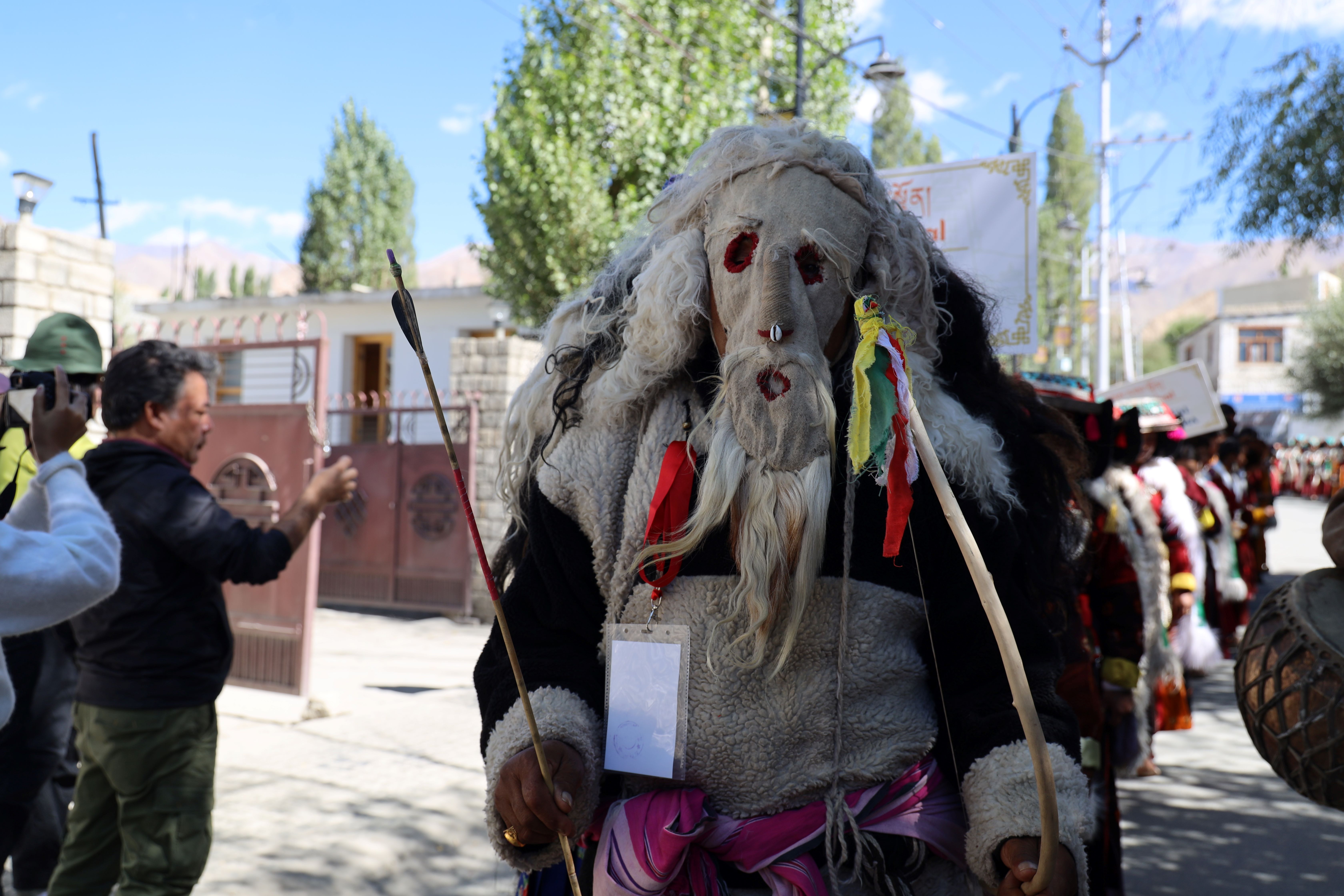
Reflecting on Ladakh’s Cultural Tapestry
The Significance of Ladakh’s Festivals: A Living Legacy
Ladakh’s festivals are much more than annual events; they are the heartbeat of the region’s cultural identity. These celebrations, ranging from the grandiose Hemis and Losar to the more intimate gatherings like Phyang Tsedup and Matho Nagrang, encapsulate the essence of Ladakh’s spiritual and communal life. Each festival offers a glimpse into the deep-rooted traditions of Tibetan Buddhism intertwined with ancient local customs, presenting a rich tapestry of faith, artistry, and community spirit. These events are vital in maintaining the region’s historical continuity, serving not just as religious observances but as occasions that strengthen social ties and pass down age-old traditions through generations. They are living museums of Ladakh’s heritage, showcasing the values and practices that define the region’s unique identity.
Promoting Cultural Tourism: A Call for Respectful Engagement
As Ladakh’s festivals draw more global attention, it becomes increasingly important for visitors to approach these cultural treasures with respect and mindfulness. Cultural tourism, when practiced responsibly, offers an unparalleled opportunity to immerse in Ladakh’s rich traditions. However, it also comes with the duty to safeguard the authenticity of these practices. Visitors are encouraged to engage with these festivals beyond mere observation—by understanding the rituals, participating respectfully, and supporting sustainable tourism initiatives. This respectful involvement not only enriches the visitor’s experience but also plays a crucial role in preserving the festivals’ original spirit. Through conscious participation, tourists can help ensure that these cultural expressions remain vibrant and unspoiled by external pressures, thereby contributing to the long-term preservation of Ladakh’s cultural heritage.
Closing Reflections: The Dual Impact of Festivals on Locals and Visitors
The festivals of Ladakh resonate deeply with both the local community and those who come from afar to witness them. For the people of Ladakh, these festivals are pillars of cultural identity and spiritual practice, offering moments of collective reflection and celebration. They are crucial in maintaining a sense of continuity amidst the rapid changes brought by modernization. For visitors, these festivals offer a rare and enriching experience—a window into a world where tradition, spirituality, and daily life are harmoniously intertwined. The impact of these festivals extends beyond the days of celebration, fostering a deeper understanding and appreciation between cultures. As Ladakh continues to navigate the challenges of the modern world, its festivals stand as powerful reminders of the importance of preserving cultural traditions. By supporting and participating in these festivals with respect and awareness, we contribute to a broader effort to celebrate and sustain the cultural diversity that makes our world so rich.

